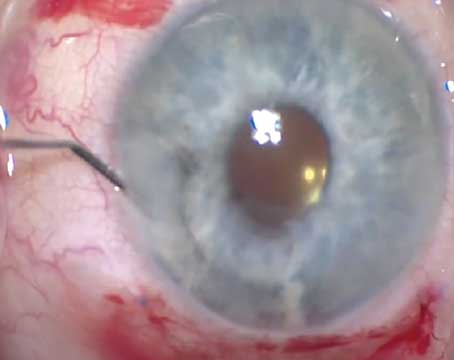Most comprehensive ophthalmology practices dispense eyewear as a convenience to their patients. Others have a deeper stake in their optical dispensary, with eyeglass sales accounting for as much as 30 percent of the practice’s revenue. The latter manage to maintain respectable capture rates despite the formidable competition posed by big-box retailers and national chain stores.
Now, the paradigm may be shifting. Slowly but steadily the Internet is becoming a legitimate destination for consumers who are seeking information about eyewear, as well as their pioneering counterparts who are actually purchasing prescription eyeglasses online.
The writing is on the wall: The number of Americans who purchased eyeglasses online rose 10 percent from 2010 to 2011, according to the vision care company VSP Global, and the most recent Vision Council Internet Influence Report revealed that consumers who are already using the Internet to some extent when purchasing eyewear will likely continue to do so in the future. The report also stated that older patients—over age 35—are now likely to try buying eyewear online, in contrast to past data that showed that 18 to 34 year olds were most inclined to defect to the Internet for eyewear.
Ophthalmologists have several choices as the online optical trend begins to affect their practice revenue. They can combat the evolution by advising patients to beware of online eyewear; they can educate themselves about the trend and decide if playing a part in it could benefit their practice and their patients; or they can ignore it, rationalizing that eyewear sales don’t play a significant enough role in their livelihood to make much of a difference—and that the trend will probably fizzle out anyway.
Changing Buying Habits
Bob Main, a Utah-based Internet business coach and consultant with a background in online optical sales, helps ophthalmologists use the Internet to their advantage. He advises clients to work with the trend instead of against it. “Let’s face it,” says Mr. Main, “consumers are changing the way they shop for shoes, videos, clothes, prescription drugs and yes, even eyeglasses and vision services. They are turning to the Internet and social media to get product information, comparison shop and see what experience their friends have had with products and services.“ What’s more, says Mr. Main, there’s no question that consumers are becoming more comfortable with the idea of actually purchasing eyewear on line. “The bell curve of people buying glasses online is going to go up pretty dramatically over the next couple of years, he says. “Most experts watching the industry agree that eventually it will end up being that between 10 percent and 15 percent of all eyeglasses sold in the U.S. will be bought online.”
Interestingly, while no hard data support this, Mr. Main and others point out that frequently the eyeglasses bought online are second and third pairs. “A lot of people have a vision plan that allows them one pair free or at reduced price and they get that pair at their eye-care provider, and then they find that they can get a back-up pair online at a discounted price,” says Mr. Main.
Work With, Not Against Patients
Mr. Main says every physician needs to decide how he’s going to get involved. “If an ophthalmologist decides that he does not want to sell eyeglasses on line—and the vast majority are not going to—he still needs to have on his website a very robust eyewear showroom showcasing the brands he carries and the frames that are available at the practice. They don’t necessarily need to have prices, but the patient should be able to have a sense of what the practice has to offer so when they get their prescription they will want to at least look at the provider’s board and not just walk out with the prescription,” says Mr. Main.
|
Pennsylvania ophthalmic consultant Lauren Gold Kahn, of EyeOpportunities, points out that whether a traditional eyeglass dispensary is competing with a big-box retailer or an online eyeglass “e-tailer,” a winning strategy is to have a diverse enough selection of product so that patients are not tempted to look elsewhere. “I have spent my career stressing to clients that they need to be able to address the needs of everyone,” says Ms. Gold Kahn. “They need to have all the different price points on their boards and they need to make sure that they have the proper mix of products so that they don’t eliminate any potential patient. If a patient lets you know that she is going to shop online because she thinks she can get a better deal that way, you can inform her that you can offer those price points too, and that you can guarantee the results. That can make a difference, especially to a patient who appreciates a bit of special attention.”
Another possible avenue for independent doctors interested in finding their place in the evolving online optical arena is a program called MyOnLineOptical. This program, which was developed by Essilor, in partnership with FramesDirect.com, enables doctors to easily open a turnkey e-commerce site. [FramesDirect.com is owned by Jobson, the publisher of Review of Ophthalmology.] The doctor maintains complete control, determining the product pricing and selection and preserving the look and feel of his practice website, according to John Walborn, who heads the My OnLine Optical initiative.
Ophthalmic dispensaries represent just 15 percent of the current 1,000 MyOnLineOptical sites, according to Mr. Walborn, but Howard Purcell, OD, Essilor vice president of customer relations, says ophthalmologists have responded positively. “There has been a great deal of interest and some utilization from ophthalmology,” says Dr. Purcell. “It’s a great way for ophthalmologists to provide a convenient option for their patients to be educated about eyewear as well as have the opportunity to purchase, if they desire.” He says there’s still a general reluctance on the part of the dispenser and the patient to order multifocal or bifocal lenses online, though single vision and sun wear are much more accepted.
Evolution and Resistance
Lansing Ophthalmology in East Lansing, Mich., is among the practices participating in MyOnLineOptical. “We see hundreds of patients every day and we see plenty of them walking out the door with their eyeglass prescription,” says Michael Kramer, Lansing’s director of optical services. He says the hope was that by participating in MyOnLineOptical the practice will capture some of those people who were walking out the door and maybe even attract some new ones.
“When I see who is buying from the online store, for the most part it is people who are not buying in our dispensaries,” says Mr. Kramer. “So in that respect I think it’s working or at least helping. Some of our referral sources are not crazy about the idea of online sales, so it’s a sensitive issue, but we are starting to see an evolution of how people are buying so we have to do something, especially in light of the staggering number of eyeglass sales that some of these online retailers are reporting. We have to at least dip our toe into the water.”
VSP has also developed a similar service that enables traditional eyewear dispensaries to compete in the online arena. The service, called e-Stores by Eyeconics, was created, according to VSP, to connect consumers shopping online with independent practitioners, and like MyOnLineOptical is designed to be an online extension of the private practice’s brick and mortar dispensary.
The average consumer has embraced the ease and convenience of online shopping, and it’s likely that the emerging partnerships between traditional optical dispensaries and behemoth vision product companies will help legitimize the trend in online eyewear sales.
However, there is still resistance among physicians who don’t see eyeglasses as simply a fashion item but as a medical device with a fashion component. Ophthalmic surgeon Scott T. Schaefer, MD, of Edina Eye Physicians & Surgeons, in Edina, Minn., notes that the potential loss of eyeglass sales represented by online competition does not make a drastic difference to his livelihood, so from that perspective he doesn’t view it as a threat. On the other hand, he’s not 100 percent supportive of patients shopping online for eyeglasses after they leave his practice with a prescription provided by him. “When patients ask me to put the PD on the prescription,” says Dr. Schaefer, “I tell them that they need to get that measurement at the optical shop. If they shop online, they have to measure it themselves. As a practice, we have discussed whether or not to make that measurement available to patients and we have not yet decided on a policy. I view dispensing glasses as a very small part of my practice, so this isn’t a huge concern to me. If they come up with a way to do eye exams online, that would be much more of a concern to me.” REVIEW






